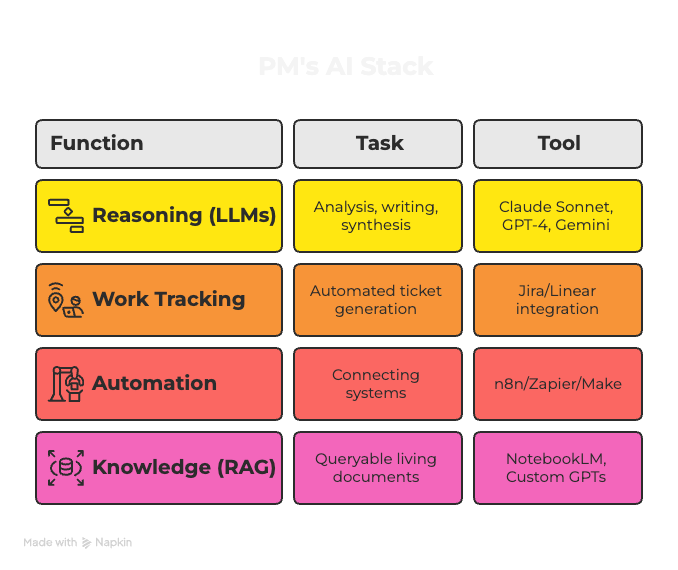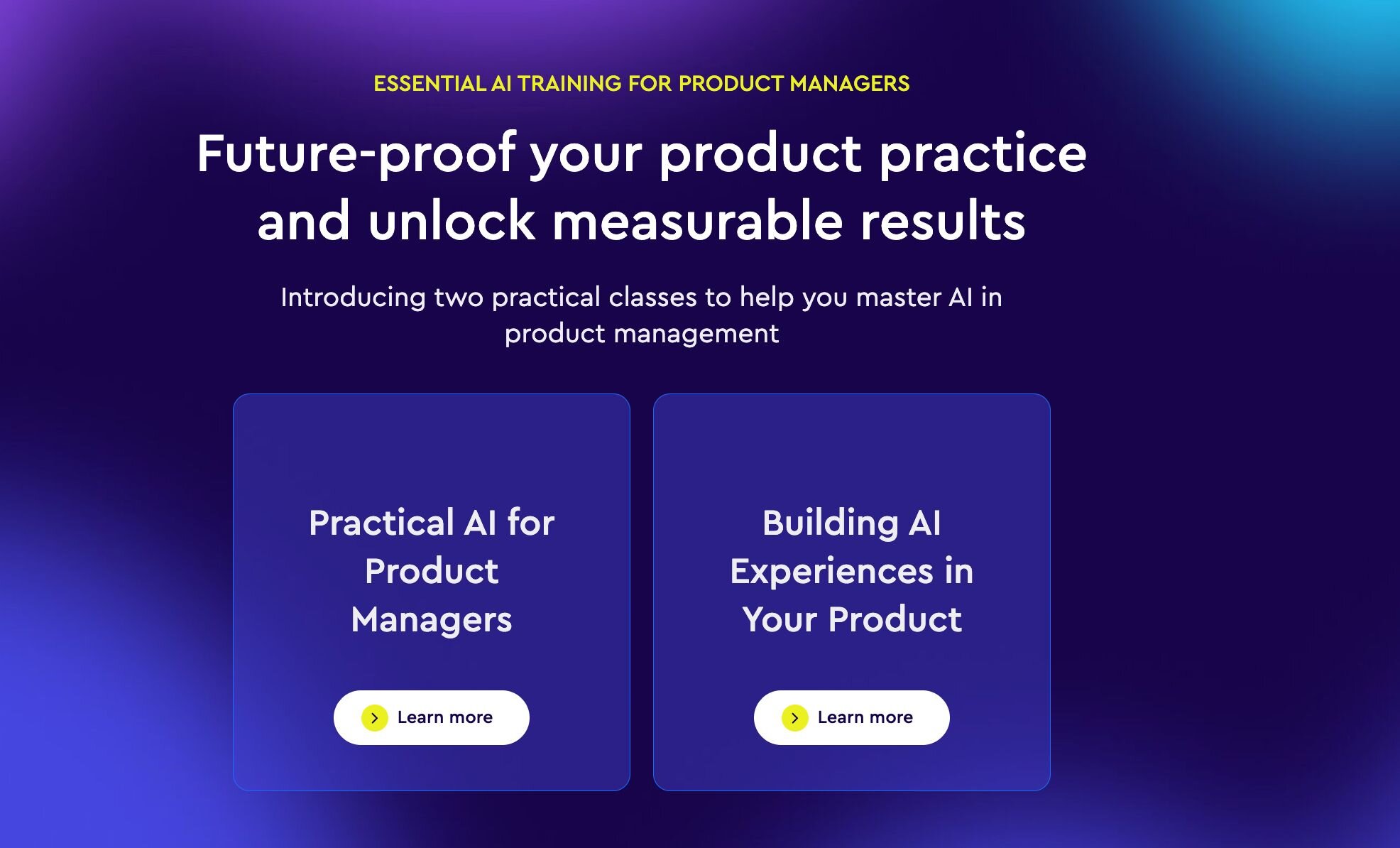In 2023, the realm of product management experienced widespread disruption from AI innovations across various domains. As we conclude the year and anticipate another year of AI disruption in 2024, we share some key insights and themes gleaned from the wealth of information within the product management community.
The evolving product landscape
First things first, despite the rise in AI tools and companies, we learned from Chris Butler, Group Product Manager – Machine Learning at Google, that AI is unlikely to take our jobs. He said in an AMA with Mind the Product that “AI has the potential to enhance our work by synthesising conversations and identifying potential issues with our products.”
He suggested incorporating AI into our toolkit to broaden our perspectives to initiate projects from scratch, such as crafting an outline for a PRD. “In the long term, machine agents could contribute valuable data and information, expanding the decision-making landscape,” he noted. “Ultimately, it will be the responsibility of the human or a small team to assimilate the data and make informed decisions.”
Adding more insights to the AI mix, Amy Challen, head of AI at Shell, in an interview with Mind the Product, stated that despite the need for technical teams, critical thinking and soft skills are just as imperative to build AI tools and products. “We need generalists and decision makers to make rational decisions and conclude why we are introducing new AI features. In a world where every professional is becoming more specialised, generalists are even more imperative to add value to products.”
Finally, in the changing landscape of products, leaders from around the world stressed to not fall prey to ‘shiny new objects syndrome’. At Mind the Product leadership meetup in San Francisco this year, seasoned product leaders concluded that as a company, you must be rooted in your objectives and your customers first and foremost, but do not throw your plan out the window just because of new technology. When it comes to ‘shiny new objects’, allowing your team to experiment is important, but keep in mind, that experiments tend to fail more often than not.
Building AI products and features
Okay, now we have grasped that AI isn’t take all of our product jobs…how can we embrace it as a partner? Well, to kick things off, Claire Woodcock, Director of Product, ML, at Mozilla, in her keynote at #mtpcon London 2023, gave us a quick checklist to abide by when introducing new AI features, or building AI products:
- Select your problem: Look for something low profile, high impact, an area for efficiency and not a part of your core customer-facing offering.
- Evaluate your data: As data is core to a successful machine learning solution, look at the quality of data you have, or how to collect, store and govern that data effectively.
- Decide on build vs buy: Tuning a model and managing infrastructure and servicing it yourself requires skills, but a third party comes with a premium cost and requires a serious consideration of data privacy and IP leakage.
- Build a proof of concept: Test that quality meets production needs and that the data accuracy, tone and investment make sense.
- Scale your solution to production: Be conscious of spiralling costs and model drift, where behaviours change over time.
We also caught up with Jamie Elliot, Head of Technical Operations earlier this year, the team at Lightful have been working hard to build AI features with a cross-functional team. One of Jamie’s key lessons has been to overcome the steep learning curve of AI and related technologies. She said: “The pace of change in AI has been unrelenting this year, with new features, capabilities and tooling seemingly released every week.
“Although developers no longer need to be experts in machine learning due to the introduction of abstraction layers, acquiring foundational knowledge about underlying AI concepts, and moving quickly as things changed, has been essential.”
The exciting but precarious future
Pondering the future of AI businesses, we spoke to VC investors earlier this year to discover if there is long-term sustainability in AI products. Sheila Gulati, managing director of venture capital investors Tola Capital stated: “We have closed deals in these spaces in 2023, but the frenzy around AI has definitely meant a lot of capital has rushed into this market. The result has been that we have backed off certain deals based on valuation, and we expect this to continue in the AI world. It has meant fewer deals overall.”
We learned that AI investment funding is having a frothy phase and many hopeful startups won’t make it. But perhaps it won’t become a bubble that bursts, because, as Isabelle O’Keeffe, Partner and Head of Origination at Sure Valley Ventures says, “AI is a way to build products faster, cheaper and easier”.
So it looks like AI is here to stay, however in wake of technological advancements, moves to legislate for artificial intelligence (AI) have been implemented around the world. Towards the end of this year, Governments agreed on the opportunities and risks that the technology presents, as well as the need to police it.
Commenting on initial movements by governments around the world, Emily Tate, Managing Director of Mind the Product, says: “As a product manager, you have to determine what you do with all this. I know of products where the AI features have been turned off in the EU in light of the legislation that is potentially coming. It forces you to make decisions like, ‘Do we use AI for some of these features at all? Or if we have to have a different version for the EU, what does that do to the EU product? How do we promote and sell it to our EU customers?’.”
Emily says that product managers need to get together with relevant colleagues to decide what the political attention on AI will mean for their business. She likens it to the way that businesses have had to deal with GDPR regulation, where some businesses have decided to treat all their customers the same, some have segmented their customer base and given them different versions of a product, and some have simply denied access to customers in certain parts of the world.
She concludes: “There is the possibility for a lot of positive stuff with AI. And I am hopeful that we’ll be able to find a balance where we can at least see the harm coming, and minimise the worst of it.”
In this exciting yet precarious future, our core principals as product managers remain the same—focusing on the customer, thinking critically, and always looking to solve problems. Additionally, as Parv Sondhi stated in a guest post for Mind the Product, as AI/ML becomes more pervasive, ethical considerations must be front and center. Product managers should advocate for transparency, fairness, and accountability in AI systems. A commitment to ethical AI/ML practices is not just a legal and social imperative but also a critical aspect of building trust with users and protecting the brand’s reputation.
Anticipating the unfolding of the coming year, we eagerly await the advancements that new tools will bring to enhance the art of product management. If there are insights or lessons from your experiences in the past year that we might have overlooked, we invite you to share them with us. Drop your thoughts in the comments below, or connect with us via email at editor@mindtheproduct.com.







